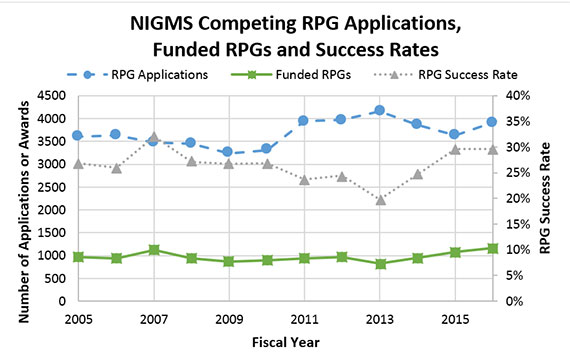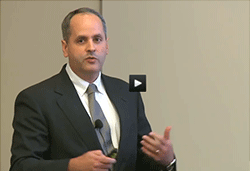NIGMS is committed to ensuring that taxpayers get the best possible returns on their investments in fundamental biomedical research. As part of this commitment to stewardship, we regularly monitor trends in our funding portfolio.
We recognize the value of a diversified investment portfolio and approach our research investments in a similar fashion. Sustaining a broad and diverse portfolio of talented investigators is a central goal of the Institute, as a wide variety of research questions can be studied by an investigator pool that comprises many different backgrounds, fields, and skills. To monitor this, we track the “cumulative investigator rate,” which indicates the proportion of unique investigators actively seeking funding who had an NIGMS grant in a given Fiscal Year (FY). As shown in Figure 1, the number of investigators seeking support consistently increased between FY 2006 and 2014, but the number of NIGMS-funded investigators remained relatively unchanged over that same period. As a result, the cumulative investigator rate steadily decreased. Since FY 2014, the cumulative investigator rate has steadily increased, as the number of applicants seeking support has stabilized and the number of investigators receiving support has grown by 14%. Currently, 37.4% of investigators seeking R01/R35 funding from NIGMS received support in FY 2017.





 I’m very pleased to announce the selection of Rochelle Long as director of our Division of Pharmacology, Physiology, and Biological Chemistry (PPBC). Rochelle is a pharmacologist who has played leading roles in fostering research in pharmacogenomics through national and international collaborations.
I’m very pleased to announce the selection of Rochelle Long as director of our Division of Pharmacology, Physiology, and Biological Chemistry (PPBC). Rochelle is a pharmacologist who has played leading roles in fostering research in pharmacogenomics through national and international collaborations.